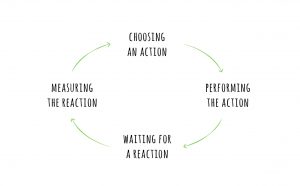
Hiring people is one of the most difficult things leaders do, but if you do it right, it makes everything immensely easier. However, most of the time we get in a rush because we’re desperate for help and try to take the easy or quick way. Time and again, I’ve seen needless suffering come from this strategy.
Here are three key steps I recommend to build a great hiring process.
I know the temptation to water this down is very strong, but don’t! Follow through, because there’s nothing more important than getting the right people into your business.
1. Go beyond the traditional job description. Sometimes the wrong person is the result of a lack of alignment about the purpose of the role. If you never really agree on the right idea, you’ll never have the right person. Huddle up with the key stakeholders and discuss not only the job description, but all of the following as well:
- What are the must-haves versus the nice-to-haves?
- What are the nonnegotiable personal characteristics and behaviors required for this role?
- If this person is wildly successful, what specific measurable and non-measurable results will we see one year from now?
- What would the right person in this role accomplish in the first 90 days?
- How do you expect this person to achieve these results? For example, will the person work with an existing team, command and control, or collaborate across the business?
2. Look for the right candidates. Source candidates directly within your industry or related industries. Reach out to your business network and place appropriate advertising. And recruit beyond your own network. It’s easy to hire people who are known, but you or your colleagues may not already know the best person for the job. Be persistent but patient…it is worth it!
3. Try dating before marrying. Once you have narrowed the selection of candidates to two or three, ask each of them to prepare a plan of what they would do in the first 90 days to present to key stakeholders. Or have each candidate do a bit of role-playing. For example, if the candidate is going to be in a sales position, have your team play the clients and ask the candidate to give a full sales pitch for your product. Or, if the candidate will be in a technical role, give him an existing software problem and have him present a solution. Get creative and have some fun, but do not skip this important step.
- Don’t be overly prescriptive about what you’re looking for in this test. Give your candidates some flexibility to demonstrate their own resourcefulness, creativity and ability to think independently. This will speak volumes about how they will perform if you decide to hire them. And don’t give them more than two or three days to prepare a presentation. On the job, sometimes all we have is a weekend or overnight to prepare for a meeting with a major customer, our team or the board of directors.
- Give your candidates the contact information for key people who can answer any questions they have during the process. After the presentation, find out if they talked to any of these people. Could their presentation have been better with more information? Did they use their resources?
- When you invite key stakeholders to the candidate’s presentation, make sure they have copies of the job description, including the must-haves versus the nice-to-haves. Have an honest conversation with stakeholders right after the presentation to make a decision based on facts and instincts.
- Make sure each candidate knows he or she will have 45 minutes to present, no more. Encourage them to leave time for questions during the 45 minutes. After the presentation, dismiss the candidate and have your team spend 15 minutes discussing the candidate and making a decision. If you allow people to start asking too many questions of the candidate, you risk your team trying to lead a candidate to give the answers you’re looking for. Remember: You want your team to look forward to these presentations, and if they drag on or if the process becomes painful, the value will break down. Keep them to 45 minutes and 15 minutes for Q&A!
One last tip about hiring the right person: Remove time from the equation.
Too often in hiring, we’re reacting to the seemingly insurmountable pile of work that must get done right now. It’s difficult to look beyond this short-term crisis and take the time to make the right decision, not just the short-term stop-gap decision. Remember, you hired the wrong person before, and it turned out to be far more trouble than any temporary work crunch. Don’t make the same mistake twice.
This sounds daunting, but, like everything else, good planning makes everything else a piece of cake.
Have you used any of these strategies? Or have you skipped some of these steps and hired the wrong person? What else have you seen work well? Please leave your comments below.
Business & Finance Articles on Business 2 Community(17)
Report Post





